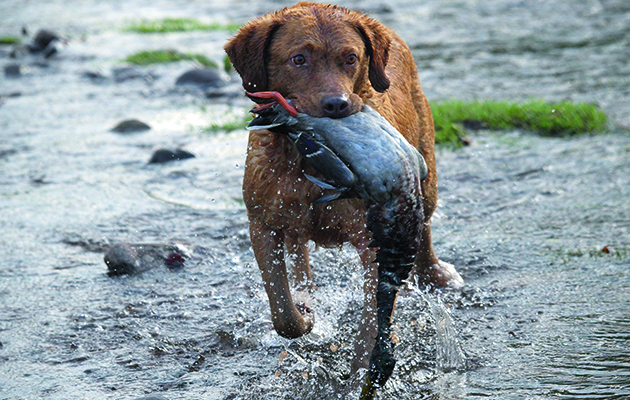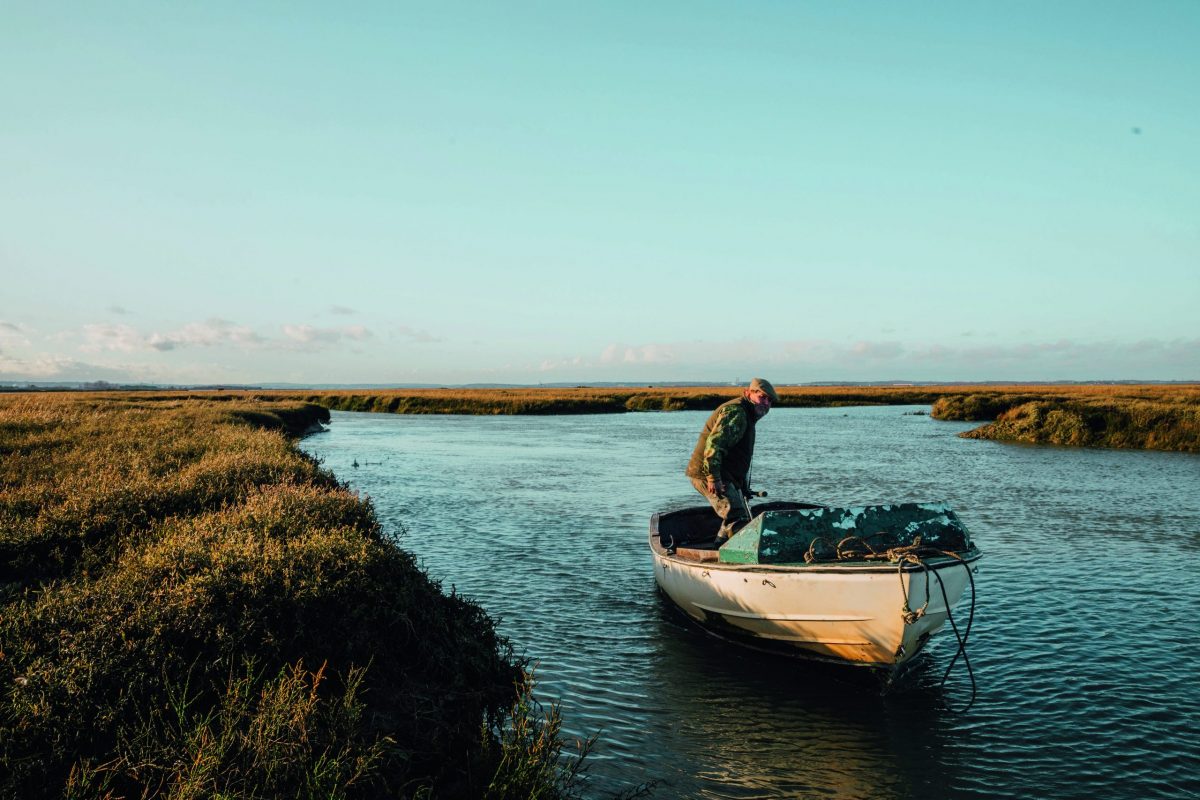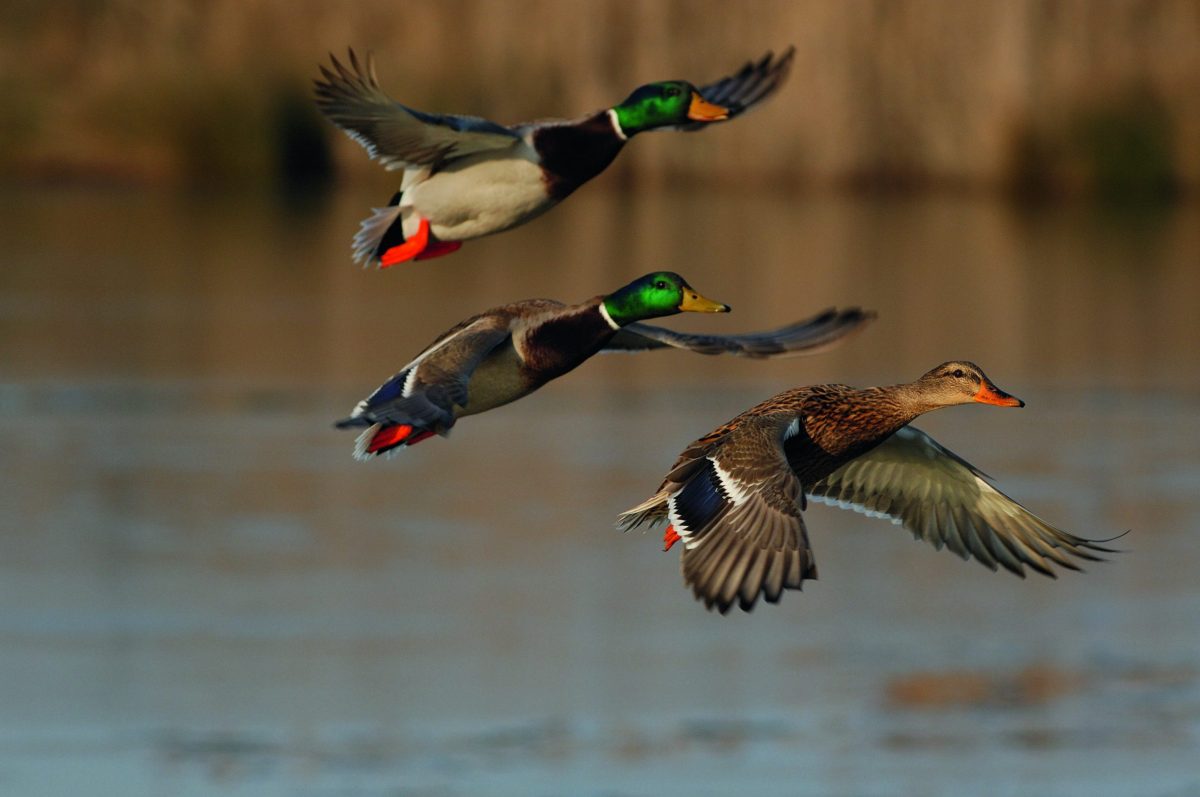The Chesapeake Bay retriever is the ultimate wildfowling dog
Labradors may be by far the most popular wildfowling dogs but the powerful Chesapeake Bay retriever is tailor-made for the job, says David Tomlinson

The Chesapeake Bay retriever was once a ducking dog
Looking down at me as I write is a splendid drake pintail, a memento of a wildfowling excursion in February 1989 with fellow Shooting Times contributor Mike Swan. Mike shot the pintail and presented it to me afterwards. It had been retrieved perfectly by his golden retriever. Mike has always had golden retrievers, so it was completely unmarked and instead of eating it I decided to have it mounted.
That particular expedition was memorable because I nearly lost my chest waders in the Medway mud. The conditions were challenging, but at least I had been sensible enough not to take my springer. Though a good swimmer, she wouldn’t have been a match for the mud and the tides.
The last thing you want on a wild fowling trip is a dog that you are worried about. A good fowling dog has to be not only a powerful swimmer, but one that has strong survival instincts and an ability to look after itself. I have been wildfowling in Scotland, England and Wales, but I’ve never been a true wildfowler, possibly because I have never owned a suitable dog for the job. Over the years I have met several English springers that were accomplished performers on the foreshore, but they were in a minority.
Labradors are popular wildfowling dogs
By far the most popular foreshore dog is the Labrador, and deservedly so. If you look into the Labrador’s history, you will discover that the dogs we know nowadays are all descended from North American animals that were used for both wildfowling and fishing.
A natural affinity with water was an essential attribute, and that’s a trait that has been carried through to the present day. There must be Labradors that don’t like water, but I’ve never met one.
I have never been convinced by the so-called webbed feet that some people claim Labradors have, but that thick double-coat is just the job for freezing winter forays, while the otter tail really does seem to be a great swimming aid. Combine these points with a natural retrieving ability and a relaxed attitude to life — essential for those long waits in the hide — and it’s no wonder that the Labrador is the number one fowler’s companion.

Most of the top wildfowling Labradors are black, reflecting that most working Labs are that colour
Top wildfowling Labradors are black
Most of the top wildfowling Labradors that I’ve met have been black, but that simply reflects the fact that the majority of working Labradors are that colour. The pale-lemon dogs are clearly not suited for wildfowling, as they are far too conspicuous on the saltings, but that’s a problem that can be solved by using a camou age neoprene coat. Perhaps the best Labrador colour for a fowling dog is dark fox-red, one which will allow the animal to blend naturally with its surroundings on the foreshore.

A fox-red Labrador will blend naturally with foreshore surroundings, making it an ideal wildfowler’s dog
Chesapeake Bay retriever was originally a ducking dog
A natural camouflage colour is one of the great assets of the Chesapeake Bay retriever, a dog that on paper has the best qualifications to be a wildfowler’s companion. These powerful retrievers evolved on the shores of Chesapeake Bay on the East Coast of America. They may look like a big wavy-coated version of a Labrador, but they are not closely related and are very different dogs. The Chesapeake Bay retriever was originally a so-called ducking dog, employed by 19th-century commercial gunners to retrieve their ducks. These were destined for sale in the markets of New York.
Chesapeake Bay is a huge estuary, covering nearly 65,000 sq m and with 150 major rivers owing into it. It shares the same degree of latitude as southern Portugal, but winters there can be cold, and the area around the Susquehanna river — one of the biggest rivers to ow into the bay — often freezes. It’s no wonder that the retrievers that they bred here are as tough as they come.
I am an admirer of the Chessie, but unless you are an experienced dog handler I wouldn’t recommend one.
However, tap “long retrieve” into your search engine and you will find a wonderful BASC video of Echo, a Chesapeake Bay retriever, performing a hugely challenging retrieve of a mallard across a flooded channel of the river Dee. It’s enough to convince you that this Yankee has to be the ultimate fowler’s dog.
My most recent wildfowling excursion was last December with Jon Debnam and his golden retriever bitch, Peg. It was the first time I had been wildfowling with a golden retriever since my outing with Mike Swan all those years ago, and was a reminder that a well-trained golden can make an impressive foreshore dog. Peg is a beautifully trained retriever, and wouldn’t dream of running-in. But I have seen fowling dogs that leave the hide as soon as they think a bird has been hit and these animals are often bag-fillers — fast retrieves are essential on the foreshore, where tides soon whisk a bird far from where it has fallen.
Wildfowling is a specialist pursuit, but all the best fowling dogs I have come across were great all-rounders, as happy in a pigeon hide in summer as a duck hide in winter. I’ve never met a wildfowling HPR — so if you happen to have one, I would be delighted to hear about it.








